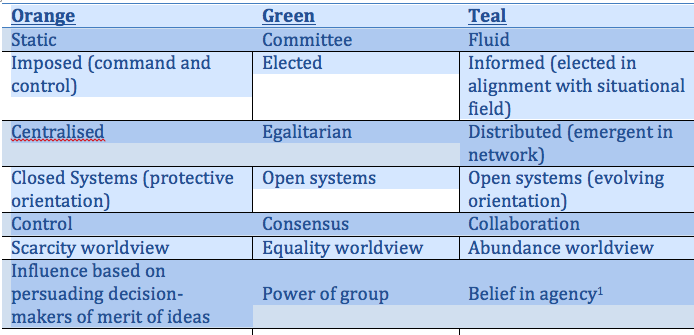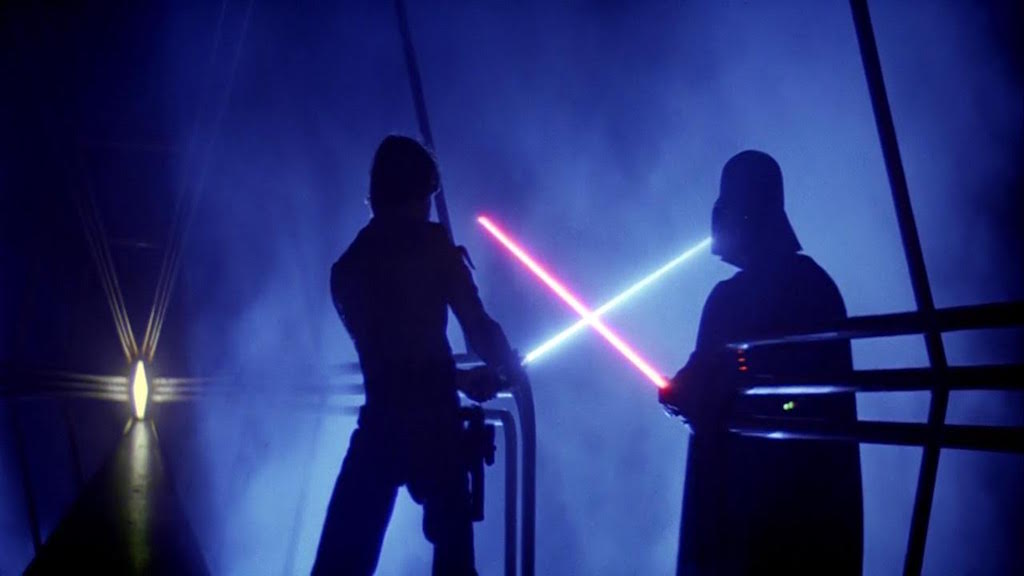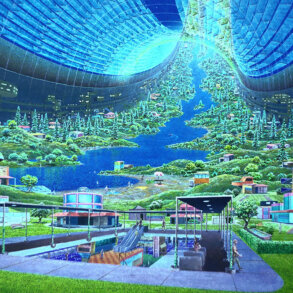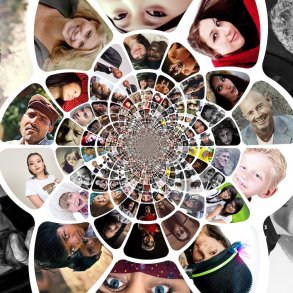In a crisis, is command-and-control better than distributed decision-making?
By Matt Dockerty for Enlivening Edge Magazine
I imagine that like others born to “Generation Star Wars”, I’ve often felt torn between the energy of imposed power bent towards self-service (think Darth Vader), and an internally-sourced yet externally-serving power (think Obi Wan).
With the recent renewal of the Star Wars films series, I’m curious—as Teal Organisations start to emerge—about what is a healthy and evolved use of power and how should this manifest in Teal consciousness humans and organisations? This article is an attempt to delve into that question, and how Teal-power differs from power in many of today’s organisations.
Perhaps the most oft-quoted tenet of Teal organisations is that power and decision-making are distributed, as compared to Orange where centralized power is the defining structure.
Might there be conditions in which the Teal approach is more appropriate and other conditions in which the Orange approach has more merit?
Deborah Arts in an article published in Canadian Business suggests “Flat hierarchies may be in fashion, but structures and chains of command were created for a reason. Someone has to be in charge.” That’s a view, it would seem, born from an Orange view of organisations; a view which may no longer be the most appropriate response to today’s environment (despite being the dominant paradigm in many organisations).
I’ve often looked for an integration of Orange and Green paradigms and emergent Teal’s paradigm. I’ve fallen back on the assumption that in times of crisis a command-and-control structure is best suited, but outside of that situation, self-organising teams are most effective. However, a recent conversation with a sailor friend, together with my own experience of Agile projects and organizational crises, has led me to question that assumption, and to wonder where command-and-control is more effective than Teal approaches to decision-making.
 In a conversation about sailboat races, my friend was enthusiastically explaining that when each individual role on the boat was encouraged to communicate to another role as they saw necessary—rather than through the captain—the real-time adjustments that were possible led to more effective races and better placements in the winning lineup.
In a conversation about sailboat races, my friend was enthusiastically explaining that when each individual role on the boat was encouraged to communicate to another role as they saw necessary—rather than through the captain—the real-time adjustments that were possible led to more effective races and better placements in the winning lineup.
Further conversation revealed that this team was familiar with each other, and understood their roles (the importance of which we’ll return to). This mirrors my own experience where an Agile approach—coupled with a clear set of principles (not policies!) for working together—yielded better outcomes, better ability to respond to unforeseen situations, and better managing during time-pressured situations than I’d experienced previously in more hierarchical structures.
Given this, I’d argue that command-and-control structures are not more effective in times of crisis, and that command-and-control structures are born largely from Orange consciousness’ ego, need for control, and lack of trust in emergent design.
Perhaps command-and-control is only a substitute for a lack of preparedness, only an unwillingness to have honest/truthful conversations about expectations, and only a substitute for fully empowering and supporting a team’s development. At its worst, then, command-and-control structures really represent a failure of leadership to provide a work environment where people can develop, and are empowered and trusted.
Indeed, contrary to the assertion in the Canadian Business article, self-organising teams (guided by principles, such as those offered by Holacracy) seem the most appropriate response to a dynamic/crisis environment. In short, Teal allows for creativity and emergent responses to complex environments, but also for more feedback and interaction between roles within situations that require a fast response.
Perhaps some of the concern raised by the article is a response to Green organisations, where community-based decision-making, often coupled with a lack of clarity on roles, can led to ineffective and slow decisions. Perhaps there is an unwarranted assumption that these limitations will also be present in Teal organisations.
This raises the question of how power structures evolve through organisational stages?
Green is a necessary stage to allow compassion and consideration for the whole to be developed, which is then integrated into a healthy expression of Teal.
The limitations of Green are born from an orientation that focuses only on equality, rather than also on considered roles based on the situational field and on evolutionary purpose of an organisation In Teal, whilst that compassion and concern for all sentient beings is present, decision-making process is selected based on the response required, with clear roles, and in alignment with the situation.
In Teal, as compared to both Orange and Green, decisions are made close to the system that requires them, by those self-organising teams closest to the issue at hand. In Orange and Green structures, with command-and-control and committee-based decision making respectively, time is spent synthesizing information (with the associated information loss) so that others further away from the situation can impose decisions on action/future direction. In a healthy Orange organisation influencing decision makers is based on an idea or proposal’s merit, but without open discourse in Orange organisations, the wish to have an individual’s proposal accepted can lead to unhealthy lobbying and politics.
The table below summarises the aspects of decision-making power discussed above, as expressed in Orange, Green, and Teal organisations.
Expressions of Power across Organizational Life Stages

How then could we amplify and inspire these expressions in the workplace? I like to think across the relevant architectures in business, social, and technological aspects, and ensure that all three are considered and reinforce one another, for successful change.
As regards business and social architecture, Laloux’s work points to a framework (self-organization, wholeness and purpose) and to systems like Holacracy, and provides models and principles for the same. I recommend Carole and David Schwinn’s book The Transformative Workplace for those wishing to explore social architectures further. For technologies, an earlier post of mine outlined some considerations.
Ultimately, however, change begins with the individual; despite an assertion by a Star Wars character, perhaps the Dark side doesn’t really have that much power to cope with our current world, but instead is a view fed through fear and Orange perspectives.
Does this ring true for you? Are there situations where Orange structures are more appropriate for rapid responses, or do you agree with my assertion that Teal affords a better-informed response, aligned with the situation?
[1] Ability of an individual to act on their will (or Purpose)

Matt currently lives in British Columbia, Canada, with his three girls (wife and two daughters). His passion is working with technological and personal change, and he believes the real ‘gold’ of transformation is in social architectures (relationship agreements, group dynamics, intuition and social fields) and how those evolve in alignment with the future purpose of individuals and groups. Matt Dockerty.





Great exploration Matt, thank you!
In Orange the default decision-making system is the pyramidal hierarchy. In Green it’s the full group–any decisions that have not been delegated to committees or individuals come there. In Teal the default is the advice process, and like you i have been wondering if there are limits or best-fit situations for that approach?
My current thought is what we might evolve to in the future would be each organization establishing an algorithm by category. That is, a list of which types of decisions are made by individuals without consultation, which call for the advice process, which are group decisions, and so on. For example, when i helped a small family-owned company with succession (transitioning management from the founding parents to the next generation), we wrote up a simple, one-page document that specified which decisions from now on belonged to who, and when consultation was required. Because each organization differs by purpose, focus, roles, etc., the content of categories would vary. Organizations of a similar type would benefit from reaching each other’s lists, just like the housing co-op where i used to live benefited from reading another similar co-op’s bylaws when we wrote ours. But in the end each organization’s algorithm would be a reflection of the distinct life force, philosophy, and culture of that particular organization–an expression of its unique organic wholeness.
Thoughts?
Thanks for your comments, Tree. I like the idea of an algorithm or principle based matrix to clarify decisions. Sounds to me a little a Holacracy’s governance process, where decision making and governance are designed into role and circle definitions. As I read your comments, I also envisioned a maturity matrix which could help organizations transition from one stage to another.
I think what i’m proposing does have some overlap with holocracy, but is more flexible. My impression is that holocracy tries to pre-set a bunch of decision rules; e.g., groups decide almost nothing (except perhaps some of the governance roles and powers?) while individuals decide everything else; meanwhile the advice/consultation process seems either fuzzy or missing from holocracy, whereas i’m suggesting specifying who consults with who about what.
Can you say more about your picture of a “maturity matrix”?
Hi Tree. Sorry for the delayed reply; I was ‘off the grid’ for a while. Blissful!
Regarding the ‘maturity matrix, I envision a guiding framework which deconstructs the key tenants of decision making. Tenants such as: structure, communication, behaviours etc. For each of these tenants an organisation could define the principles, strategies, tools and behaviours which they would see manifested in the organsiation they aspire to (based on Teal principles). By assessing the organisations ‘current state’, then putting actions in place to move towards the desired ‘future state’ – the matrix could effectively serve as a roadmap for decision making maturity.